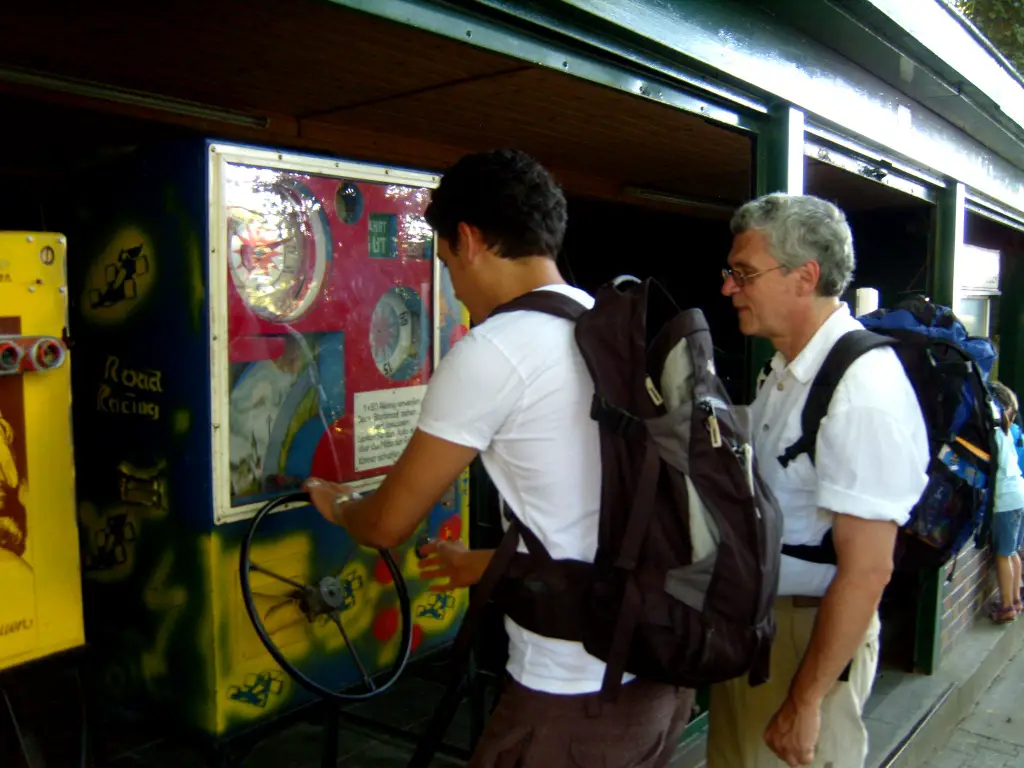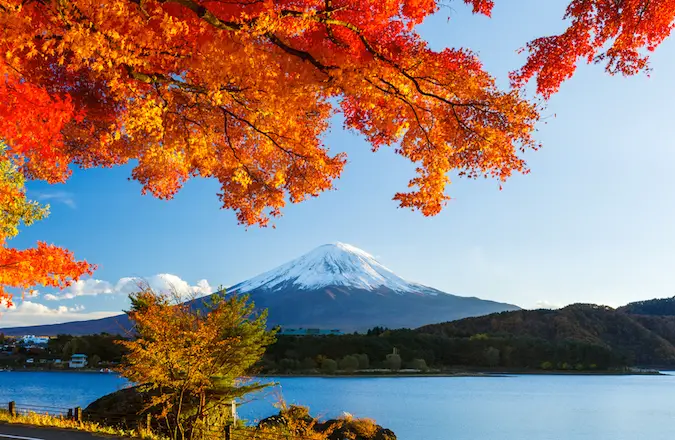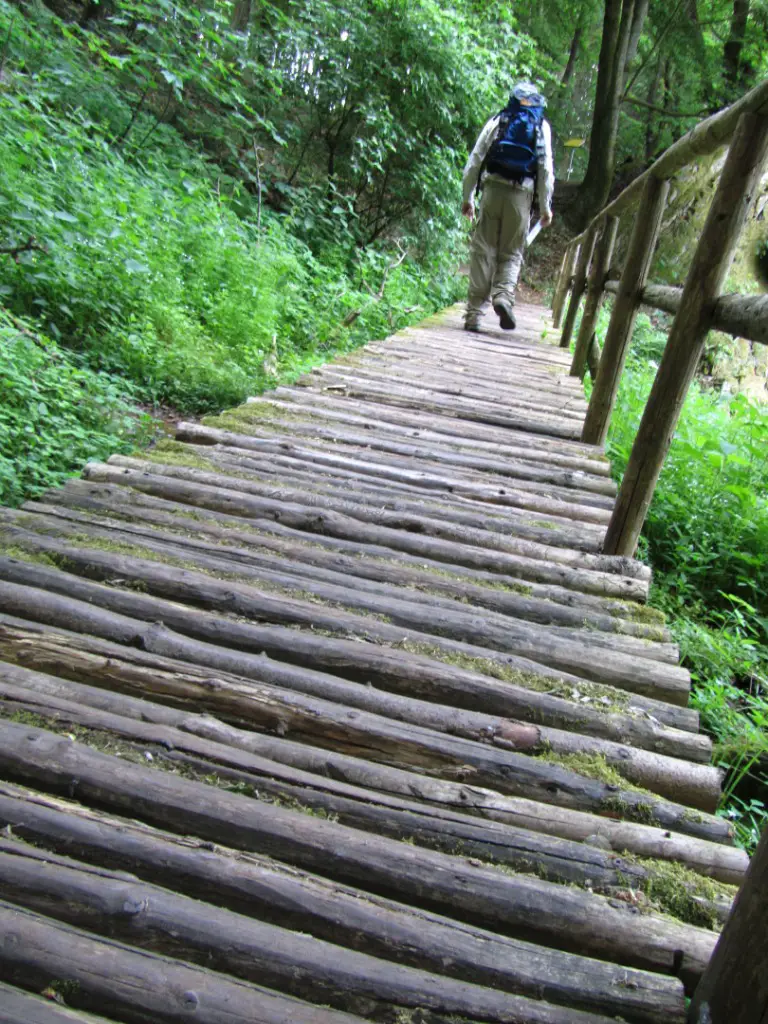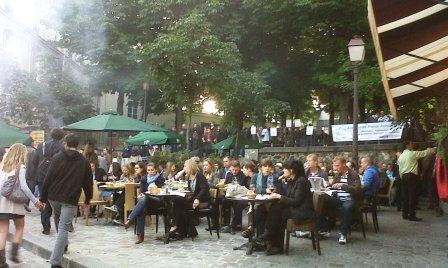The German Forest
One more reason to go hiking in Germany’s forests: they may not be there for much longer. In 20 or 30 years, there will still be life in the German countryside, but perhaps not as we know it.
In the 1980s, the German forest appeared to be on its last leaves. The German press was horrified. “Up there, all summits are toxic” was the title of a cover story in stern, Germany’s largest popular magazine (an allusion to Goethe’s famous poem “up there, all summits are still”), and the news magazine Der Spiegel followed with a three-part story which simply claimed that “The forest is dying”.
In 2000, it was confidently predicted, much-cherished parts of the German landscape such as the Black Forest would look like the Russian tundra. Oklahoma. The Gobi Desert. It was, for all intents and purposes, Der Untergang des Abendlandes, the Decline and Fall of the West.
The German government reacted by doing what German governments pride themselves on doing in times of crisis: they analyzed the situation, identified the problem and engineered a solution.
How much this solution would eventually cost, everybody agreed at the time, would be of secondary importance. (These were, after all, Germany’s bachelor days, when the country still had a lot of disposable income – before the kids arrived: East Germany first, then … well, you know the story.)
The problem of the German forest, scientists said, was acid rain, caused in turn by air pollution. The solution they consequently engineered involved a drastic reduction of emissions from industry and cars. Flue-gas desulphurization became compulsory for power stations, and all cars in Germany had to be equipped with catalytic converters.
Until this very day, people in Germany disagree about the extent to which the original diagnosis was influenced by moral panic and to what extent the recovery was assisted by processes already under way, but whatever the therapy that was prescribed by the tree doctors actually achieved, it certainly followed the first principle of the Hippocratic oath and did no harm.
In fact, the forests thrived as even the doomsayers had to admit (although Der Spiegel opted to label the sudden spurt of forest fertility as the “wrong kind of growth” and saw in it the “harbinger of ultimate destruction”.)
Today, the concentrations of lead in the upper layers of the forest soil are far smaller than the concentrations in the lower levels, and this – however you want to look at it – must qualify as some sort of success.
Over the years, other things happened in Europe: the Communist governments fell, the wall came down, Germany was unified, and eventually, the public lost interest in the story. That allowed sobriety to make a comeback, and when even the Chair of the Green Party – which had used the controversy as a springboard into national politics – declared that the crisis of the German forest was over, the media took their eyes off the trees.
Which is why the recent survey about the health of the German forest came as such a big shock to almost everyone. Only 25 percent of all trees, the survey said, were completely healthy and undamaged. This was the worst figure in 30 years, worse even than in the 1980s.
This time, however, there was practically no immediate reaction from the German government. In truth, there is not much the government could do: the immediate cause for the renewed crisis of the German forest was the unusually dry autumn, while the underlying cause is the slow but steady change of basic climate patterns. There is not only too little rain, but also, increasingly, rain at the wrong times of the year and in wrong individual portions.
The Germany of the early 21st century would be better suited to a more southern, more Mediterranean type of forest, one with more beeches and fewer pine trees, say. Such a conversion, however, while technically possible, is largely beyond the control of the government since roughly half of the German forest is in private hands.
And private owners like trees that grow fast and produce a quick profit – pine trees, for example. (In other western countries, by the way, the rate of private forest ownership is even higher: about 60 percent for the UK and the US, about 70 percent for France.)
Ultimately, however, following the German tree scientist Prof. Michael Müller, it is probably true to say that the idea of a “healthy forest” is a myth. Crisis is the natural state for any large organic system: a state of constant evolution, brought about by the need to adapt to a constantly changing environment.
Before acid rain, the forests had to cope with the unchecked air pollution of the 19th century – and before that with marauding armies or some despot’s need for timber to build ships. Or primitive agricultural techniques such as slashing and burning.
And since it survived all of that, the odds are very much in favour of a continuing existence of the German forest – even though it may look slightly different from the one in which Hansel and Gretel lost their way.
That need not be such a bad thing for the German forest.







We surely hope so, Chris!
Nothing wrong with German forests since those last comments. Their wildlife continues to increase with spectacular species like the wolf. lynx and moose. You can still get lost in dark pines and experience the soul of the Germanic race.
It’s a begining. In comming years it will intencify and no one can stop that.This is because the root cause behind this is very different so all the efforts to correct that is absolutely of no use.
I am in Germany since February and I had the chance to look at a lot of trees. I thought it’s just my impression but a lot of trees do not look very healthy. I also think that Germany would not be Germany without their wonderful forests. I want to see even more trees in this country and as far as it concerns me it is an example for the rest of the world. Sure, it has a great industry, a lot of cars but let’s not forget that they continue to develop friendly-environment cars with a reduced level of pollution and in 20-30 years the diesel and gasoline cars will be history – at least in a country such as Germany. Regarding the pollution and health of the trees, I am also sure that this issue is also related to other countries from Europe and the rest of the world. For example, look at Romania. It was a country with a lot of forests and the communist took good care of them. After the revolution, corruption allowed private companies, investors and thiefs to cut over half of Romania’s forests and that in less than 20 years. I’ve been there and it’s a tragedy. Here is the relationship with Germany and other countries. If Romania becomes a desert, Hungary will also become a desert and Austria will have problems and Germany and so on…you go the picture.
It must be a plan that must force every country from European Union to protect forests and a minimum limit for percent. We have satellites, technology and it’s easy to estimate this by looking at a picture. I hope you got the idea…
Wow! I had no clue that this was happening to German forests! I always joked with my German friends of how orderly the trees were, as many forests were planned and planted in perfect rows. But, hopefully nature will prevail!
I had no idea that German forests were doing so poorly. It sounds like a good idea to come visit before they are further compromised.
The ability of an organism to adapt to changes in its environment is one of the definitions of health, not the ability to maintain any particular condition, however much that particular condition might be aesthetically pleasing to us.
The amazing thing about nature is that the end products of its processes are invariably beautiful and pleasing to the soul. Even swamps (pardon me: wetlands) and badlands are beautiful for those with eyes to see. Even human ruins left to natural processes have their beauty.
Fir trees are nice, but I have no doubt that whatever follows them will be as well. In the face of natural change, conservation is reactionary and often enough seems to be more an up-market consumer good.
Let us let Nature take its course and ourselves try to do no harm. Enjoy what we have now and do not begrudge Nature when time comes for it to change. “To have and to hold and, in time, let go.”
forest are in trouble from pollution around the world
Nature can heal itself but we need to help it along too, I feel. Or is it just because I’m German?
I think it sounds like what they say about forests here in the US! I think Melvin may be on to something, nature is truly wonderful and has a way of fixing itself :)
Yes, Germans are very environment-conscious, as you have rightly observed, Andrew. Hope you’re enjoying living in Germany. I’ve not yet been to Freiburg but heard it is a very charming town.
Living in Freiburg the trees are quite close to the populace, in many ways. Of course I see them out almost every window. But I also have friends that work in tree research. I know nothing of their results, but I know there are at least some projects underway to analyze why trees are resilient to some things and not others. Not sure if they will find anything or be able to change it, but it is cool to hear about.
I once heard that a lot of the trash separation came from that “frightened for the forests thing.” And Freiburg has added another layer of environmental checks to all the cars, in typical German fashion requiring a specific sticker to drive through town. I get the impression (living in just this corner of the country) that Germany is certainly making strides in a direction to curb pollution. I hope it helps and I will continue to ride my bike and sort my trash (hopefully doing my part.)
Thanks, Jeff. Yes, let’s hope there would be forests left for my great grand kids to hike through.
If we give nature the chance, it will heal itself! Nature rocks!
Great article my friend about bringing to light the conditions in the forest and despite the optimism, I still think conservative measures should be the order of the day and not brushed to the back burner. The forest deserves preservation for all future generations to enjoy and we need to start today.
Yes, we’ve seen some trees on many of our hikes that do not look healthy anymore. But perhaps nature will heal itself. Let’s hope anyway.
Most parts of the German forests are dead or let’s better say very ill. If you look at the leafs in summer, most have signs that the trees are not healthy. Some are brown, some trees have much less leafs than they should have.
I’ve seen a documentary about it a long time ago. If I remember correctly, about 80% of German forests are ill. Biggest reason is the pollution.
Time to schedule a visit to Germany then, Michael. Thanks for dropping by.
Really interesting! I haven’t spent much time in Germany but you’ve got me interest in the forests now! Cool stuff, thanks.